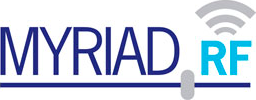Can the limeSDR be used as a tracking generator / spectrum analyser ?
I think it could …
It has more than one out put port – it can do full duplex …
I don’t know of anyone writing software to do that … for the LimeSDR …
So this is a yes / no kind of answer …
You could just use a white noise generator and use one of the Rx ports – with some Rx db reduction …
I am looking to use it as a tracking generator, too.
I was thinking of using a TX to sweep a range at a constant level into an RX through a loop and record a reference curve.
Then open the loop and insert a filter or LNA or whatever and sweep again. Then subtract the reference curve. This can be done manually in GnuRadio or Pothos. I haven’t seen how to store and recall the curves automatically in the flow diagram yet but I just started learning these programs a few days ago. I’m sure the VNA program elsewhere mentioned can be hacked to do most of this.
Using the GPIO would allow me to insert attenuators and switches and references to be automatically activated at the prompted times and turn this into a regular test equipment which usually costs thousands.
An antenna relative field strength meter would be similar. Tie together an antenna positioned on a turntable to a strength reading and graph it out. You can even plot it as gain over some reference.
There goes all the time I don’t have for the next few months.
While I’m sure you could build a tracking generator with the LimeSDR, the primary problem I see is that unless you already have test gear for this or access in some way to a good spectrum analyzer, all of your power measurements will be very much relative. There’s no telling how accurate any of the gain settings are across frequencies for both transmitter and receiver portions.
I’ve had some similar questions. Are there any MHz/GHz white noise generation apps or waveform apps for LimeSDR?
Something where you can select different waveforms for different frequencies.
Thanks.
Implementing an SNA/VNA is one of my main drivers for buying a LimeSDR. There is a good bit of math involved, but nothing especially difficult that I can see other than getting and reading a bunch of professional papers paywalled by IEEE.
Yes, one has to solve the calibration problem, but it’s not as if God supplied calibrated instruments for NIST to use for calibration work.
Axeman described the standard way of normalizing the tracking generator on a commercial SA, though I think it’s a division rather than a subtraction.
Actually it’s more complicated, or simpler. The result is a gain level which is a coefficient term. You end up with a difference of gain for your reference loop test and then add this difference back to the test signal. It depends on whether your test had gain in it or not, like an LNA or a filter, which way the sign goes. Adding or subtracting coefficients is multiplication or division. So, yeah.
I see these are old posts but…
Can’t you calibrate the Tx/Rx response by measuring a short?
